EBR charges a service fee to manufacturers to produce ebike reviews and videos, this began in 2018. It’s the same flat fee for each video, and it helps us to keep the site going while limiting ad clutter. We appreciate the opportunity to serve you with our opinions and data but respect your right to know that we receive compensation :)
The Roadster marks the third electric bike I’ve reviewed from FLX, but the first one that appears to be designed with pavement in mind instead of dirt. As its name implies, the Roadster is built to take on the city and other urban evironments. This bike starts at $1,799, making it a pretty good value buy in my opinion considering what it offers. It comes stock with a 13ah battery, but for those looking to extend the range even further, FLX has an optional 17.5ah battery that brings the price up to $2,098. There’s also the option to go for a Touring Package, which runs for $2,069, and includes front and rear integrated lights, fenders and and a rear rack. For both the Touring Package and the 17.5ah battery, the total cost comes out to $2,368. One of the things that stands out most to me about this bike is its top pedal-assist speed. The Roadster is rocking Bafang’s 350-watt Max Drive mid-drive motor, but FLX has unlocked the motor to allow for a whopping top pedal-assist speed of around 40 mph. FLX seems to be making a point with their electric bikes: They want to go fast. I think a lot of people (including me) will appreciate the considerable bump in top speed, but there’s definitely some cautions to consider. For starters, the Roadster (and all of FLX’s bikes for that matter) doesn’t fall into a standard electric bike class. This thing is a Class 4, so there aren’t a whole lot of areas that it can be legally ridden at high speed. With some of FLX’s other offerings, specifically their mountain bike models, this could make sense for those folks who have access to OHV parks and private property. But the Roadster is a road bike! And unless someone knows where I can find miles upon miles of unrestricted pavement (is that even a thing?), riding this through the city could pose some serious legal risks. I have heard of people using electric bicycles as pit bikes on actual race tracks, so maybe that’s a good use case? Now, I’m not a lawyer by any means, but one major concern I would have with this bike is getting into an accident. Personal injury aside – and there could be substantial personal injury with a top speed of around 40 mph – there may be some pretty serious legal ramifications in the event of an accident. Even getting pulled over by the police could cause a headache. These are the points I would personally take into consideration before zipping through town, we care about safety here at EBR and are just trying to give you the facts so you can make the best decision for your lifestyle, budget, and ride needs. Interestingly, the Roadster’s (and all of FLX’s bikes) control center gives the user access to a lot of the bike’s settings, including top speed. I actually changed the top speed before the ride portion of my video review and was pretty surprised to feel the motor cut off at exactly 20 mph. Again, I’m not a lawyer, but that may or may not be a way to circumvent all of this. And even if it’s not, I appreciate the ability to change the top speed in case I want to loan the bike to a friend who may not be as familiar with electric bikes. So, with these points in mind, let’s dive into the specs and experience of the Roadster.
Driving the Roadster to its ridiculous top speed of around 40 mph is the Bafang Max Drive mid-drive motor. Again, this motor offers 350 to 750 watts of power and 80 newton meters of torque, making it a punchy little guy. I’ve reviewed several bikes now with this motor and every time I use it, I like it a little bit more. It’s definitely not the most powerful motor in the world, and honestly it pales in comparison to the 1000-watt Bafang mid-drive on the Blade, but it is one of the quietest and smoothest. I think this motor fits really well with the Roadster’s look, especially the Carbon Black, as it adds to the overall stealthiness of the bike. With the Carbon Black color the battery and wires all but disappear into the frame and with the little Max Drive quietly putting away, this thing really flies under the radar. I actually appreciate that the motor isn’t overly powerful on the Roadster as it gives me some opportunity to get somewhat of a workout on longer treks. Of course, not as much of a workout compared to riding a normal bike, but still. With the standard 13.5ah battery I suspect the range would be pretty good, maybe around 20 to 30 miles depending on rider weight and riding conditions. And obviously throwing on the bigger 17.5ah battery would extend that range even further. It’s interesting that FLX has unlocked this motor to go much faster than normal. I believe the motor will continue giving pedal assist up to 40 mph, but when I was toggling through the setting I saw the option to have a top speed of 60 mph. I wasn’t really able to test that functionality, but if anyone is able to get this bike up to those kind of speeds I would love to hear about that experience in the comments below. Of course, with these kinds of speeds, brakes are incredibly important. The Roadster has 180 mm, dual-piston, hydraulic disc brakes from Tektro in the front and rear and I found the stopping power was more than enough. The brake levers themselves offer adjustable reach, which is nice for those riders with extra small or extra large hands. I normally let my levers out just a little bit as they sometimes pinch my big fingers during hard braking, so I appreciate that the Roadster has that ability. Depressing the brakes cuts power to the motor, even if the rider is still pedaling or hitting the throttle. I love brake inhibitors as it’s one of the safety features that’s better to have and not need, than need and not have. The only downside is that it adds additional points of failure and some clutter in the cockpit/handlebar area of the bike. I can easily imagine a situation, especially with urban riding, where I could slam on the brakes and forget to let off the throttle. Thankfully, my stopping distance wouldn’t be increased thanks to the motor inhibitors. Hurray! The Roadster also comes with a multi-sensor motor controller which measures torque as one input. This is an upgrade to a standard cadence sensor, and this is another one of those features I really dig for not just safety, but overall ride experience. There’s no surge of power with the torque sensor on the Roadster, but instead a nice, gradual increase in power based on how hard you push. There’s also virtually no delay from the time I apply pressure to the pedals to when the motor actually kicks on, and the same can be said for letting off the gas.
The Shimano Alivio trigger shifters and 9-speed derailleur work well enough for the Roadster, and the narrow-wide tooth pattern on the chain ring should help ensure the chain stays in place. On the outside of the chainring there’s an aluminum chain guard which helps prevent the chain from bouncing off in that direction and also keeps my pants clean! However, one thing that’s featured on the Blade but is missing on the Roadster is an aluminum, frame-mounted chain guide. Without a chain guide, the chain could potentially bounce off towards the inside of the chain ring, but I think so long as riders let off of the power before switching gears, and you don’t hammer through the gears several at a time, it should be okay. FLX has another cool offering for those riders who really want to push the top speed to the limit: larger chain rings. Now that by itself isn’t that special, but the custom CNC’d chain guard comes with it, so that’s pretty cool. Honestly though, for everyday riding I think the gearing setup of 11 to 34 teeth in the cassette and 44 teeth for the chain ring is fine. On the other side of the handlebars is the trigger throttle. I come from a dirt bike background so there’s always a part of me that dies when I see a trigger throttle instead of a twist throttle, but really, it makes sense for electric bikes. With the trigger throttle it’s easy to focus on riding, gripping, and pedaling as opposed to worrying about accidentally twisting your wrist and getting power when you don’t actually want it. This has happened to me on more than one occasion when I got surprised by the trail environment and tensed up… adding power vs. slowing down. With the Roadster, the throttle isn’t hot while the bike is at a standstill. I could’t determine the exact speed at which the throttle becomes live, but I think it’s somewhere around 5 mph, which is a bit high. I used to be of the mind that having a hot throttle at a standstill was the way to go… until I accidentally depressed it and the bike flew away from me. Now, I see the merit in having it set up this way and I think it’s just another one of those safety features, however, I wish the cutoff speed was closer to 2 mph so I could use the throttle to help starting and also when climbing slowly if the motor is put under pressure. Again, this may not matter as much for the Blade and the Trail, but for the Roadster, a bike designed to be ridden through the city, I think this is important. There’s also a walk mode for the Roadster, which can be accessed by holding the minus button on the control pad. This drives the bike at around 1 mph, perfect for, well, walking. I’m not sure I would ever use this function, but hey, at least it’s there! Good for if you get a flat tire or are taking it easy in a crowded area with lots of pedestrians.
One of my favorite features of the Roadster, and all of FLX’s bikes for that matter, is the control center. There’s just so much information available on this beast and many of the settings can be fine tuned. The control centers displays current speed, top speed, average speed, range, battery level, pedal assist mode, wattage output and quite a bit more. I dig that the battery level indicator is in percentage. I found it to be incredibly accurate and the levels didn’t suddenly dip when I demanded full power from the motor – an issue I’ve had with many other cheaper electric bicycles. But for those who prefer a bar indicator, that’s available too. Once you enter into the settings area (by tapping i twice), you can change quite a few things. I was able to switch from mph to kmh, wattage to amperage, bar battery or percentage, and I also experimented with setting a passcode to turn on the bike and set an exact top speed. The display panel LCD itself is quite bright and I didn’t have any issues at all seeing it during the day. It also automatically adjusts brightness too so you don’t have to turn it down for night riding. There is one major downside to the control center though: it’s not removable. Well it is removable, but not easily. With the Blade and the Trail I don’t think this is much of an issue, but with the Roadster – a bike meant for the road – I think it matters a little more. For me, I think about leaving this bike unattended at a bike rack. Even if I take out the battery and throw it in my backpack, I’m still going to be worried about the control center. Even if someone doesn’t pull out a screwdriver and try to steal it, there’s still the possibility of it getting scratched up by another bike and just worn down with rain and direct sunlight all day. Would that be the end of the world? … Maybe. Just maybe.
While FLX offers the Touring Package for all of their bikes, to me it makes the most sense on the Roadster. Having fenders, front and rear lights and a rear rack would be perfect for tooling around the city. And since the battery is easily removable, this could be a real option for those looking to commute. For me, the lack of suspension and narrower tires (with less air volume and therefore less comfort) would probably be an issue for longer rides, but I understand that not everyone likes suspension on road bikes, so maybe that’s okay. Plus there’s always the option of snagging a seat-post suspension. There’s also bottle cage bosses as well, which would be great for those longer rides if you don’t get a rack and don’t enjoy wearing backpacks. It’s been great reviewing FLX’s bikes and I want to thank the company for partnering with me on this review.
Pros:
- Starting at $1,799, the Roadster feels like FLX’s value buy and is very capable considering the relatively affordable price, it doesn’t offer as much versatility because the tires aren’t knobby and there’s no suspension
- The LCD control center offers tons of information and is easily visible even in direct sunlight, you can angle it a bit to reduce glare, navigating through the different display features is intuitive and I was able to reach the button pad without taking my left hand off the grip for safer riding
- Very high top speed upwards of 40 mph makes the Roadster faster than most electric bikes, and the top speed can also be dialed back through the control center, be careful how and where you ride at higher speeds because the legal limits are 20 mph and 28 mph in the USA depending on which bicycle class you ride (more on ebike classes here)
- Bafang’s Max Drive motor is incredibly quiet and smooth but still very responsive, the motor controller relies on a multi-sensor to gauge rear wheel speed, pedal cadence, and pedal torque
- The locking, semi-integrated battery pack all but disappears into the frame, can be charged on or off the bike, and also has a USB Type A port at the bottom so it can also double as a portable power bank/li>
- The Carbon Black color makes the Roadster a stealthy electric bike that really flies under the radar, it’s not as obvious an electric bike as some others, but you can also choose from Gun Metal Gray or Electric White to stand out more at night
- Could be a decent commuter with the optional Touring Package and upgraded battery, having integrated headlight and tail lights, a rear rack and fenders would allow for extended treks in the day or at night
- 180 mm, dual piston, hydraulic disc brakes allow the Roadster to stop quickly, which is especially important for an electric bike with a top speed upwards of 40 mph, the brake levers are adjustable reach and have motor inhibitors to cut power to the motor whenever the brake levers are depressed for safety
- Locking screws on the end-cap of the grips ensure they won’t spin around when you’re really torquing the handlebars, it’s another good upgrade for faster riding
- This ebike feels well balanced with the motor low on the frame and the battery on the downtube, I love that there was space on the seat tube to add bottle cage bosses so you can bring fluids or accessories (think minip-pump or folding lock)
- Narrow-wide tooth pattern on the chainring should help keep the chain locked into place, and the aluminum chain guard on the outside portion on should help prevent derailments and keep your pant legs clean and snag-free
- The kickstand choice and mounting position is very good in my opinion, it stays out of the way of the left crank arm so you won’t have issues backing the bike out of storage (because the cranks turn as you roll it backwards)
- Both wheels offer quick release which makes transporting, tuning, or fixing flats a lot easier… and that’s good because these tires are cool but didn’t have puncture protection built in like some of the nicer tires
- The display panel shows a very precise battery percentage readout and also has a range estimator (based on the battery capacity and selected level of assist), I also like that there’s a USB port up front to charge portable electronics like your phone for GPS
Cons:
- The lack of front and rear suspension can make for an uncomfortable ride on longer journeys, and this is amplified by the smaller 27.5″ x 1.5″ tires, which have a relatively low air volume… they’re efficient but less comfortable on cracks and bumps, consider adding a seat post suspension like this with a shim to fit
- Control center is more permanently fixed to the handlebars making it susceptible to being tampered with or scratched if left unattended at a public bike rack, thankfully it is semi-adjustable to angle and reduce glare
- With top speed upwards of 40 mph, this e-bike is technically illegal to ride in most places, even if the settings are toned down to be within legal parameters it could create some liability in the event of an accident so please ride safe and thoughtfully
- Shimano Alivio derailleur is nice enough, but it’s not e-bike specific and without shift sensing on this motor, it may struggle to handle the power over time, so shift gears thoughtfully by easing off as you pedal
- No chain guide means the chain could derail towards the inside of the chain ring, this is probably more likely on the Roadster compared to the Trail given the lack of suspension and smaller tires, the chain could really be bouncing around on rough roads
- The throttle doesn’t become hot until somewhere around 5 mph, it’s meant to be a safety feature but can be frustrating when climbing slowly or when you need extra help crossing a street quickly, I prefer instant throttle power or a 2 mph cutoff vs. 5 mph
- I like that FLX offers upgradable features like the Touring Package and larger capacity battery, but the price can rise quickly, making the Roadster less of a value purchase and more of an expensive electric bike that lacks some features that others might have (like puncture resistant tires, a suspension fork, etc.)
- Very basic plastic platform pedals… these don’t offer the stiffness, larger surface area, or grippy pins that nicer pedals would and I would upgrade them right away considering how fast the bike can go, you can buy some very good but also very affordable larger Wellgo alloy pedals like these ones pretty cheap online
Resources:
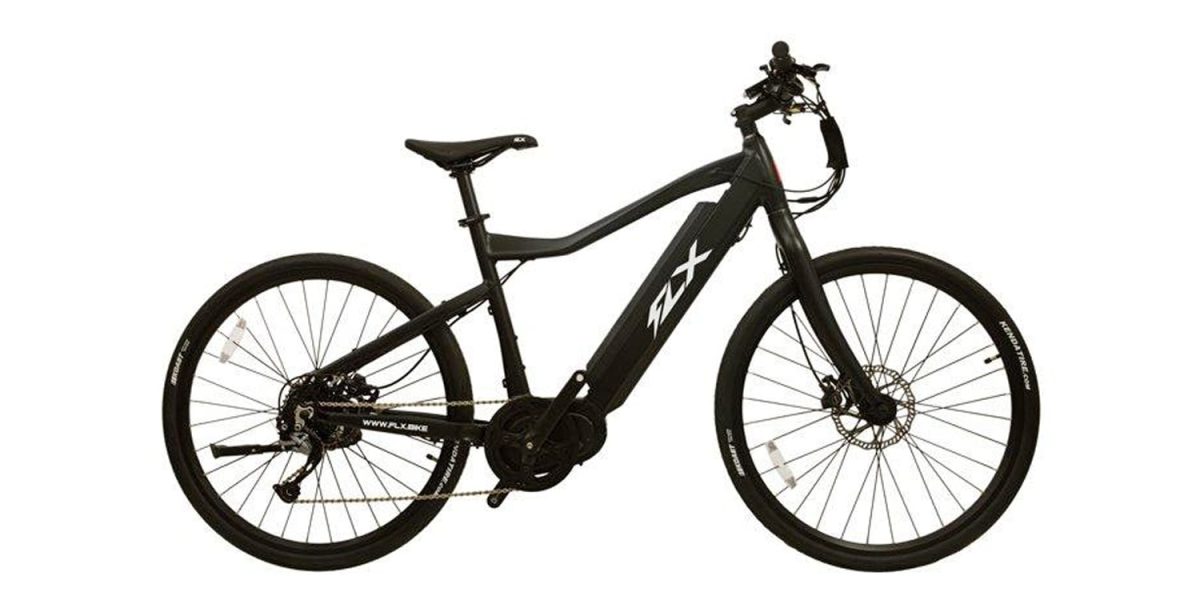












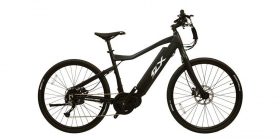
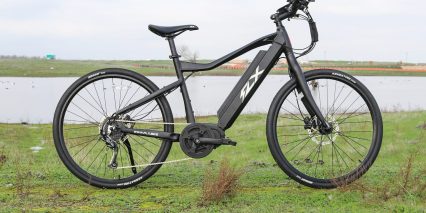

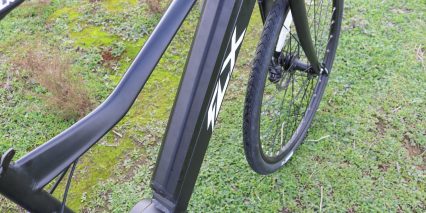
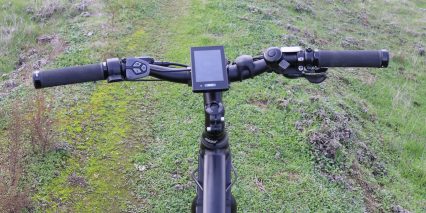

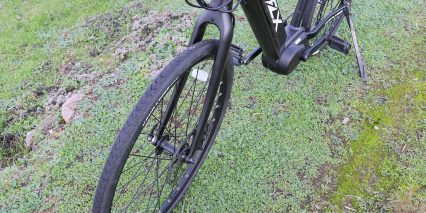
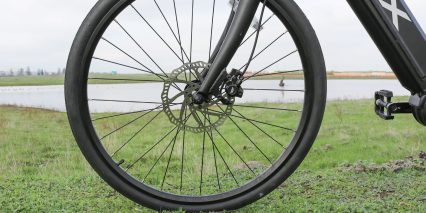
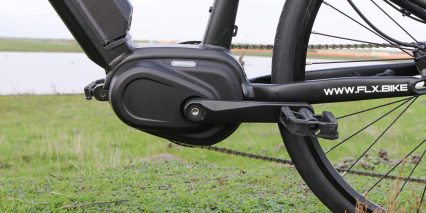
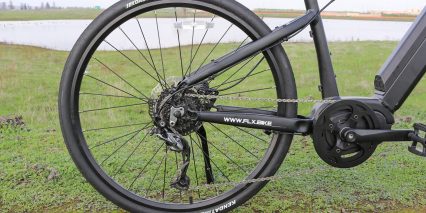
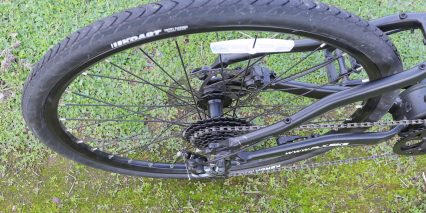
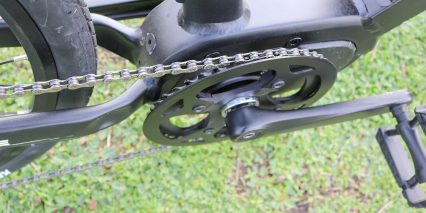
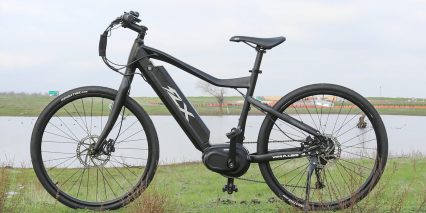

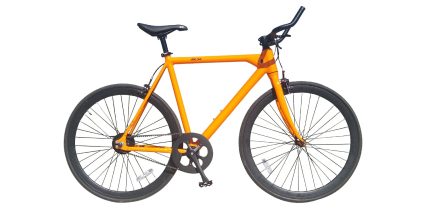
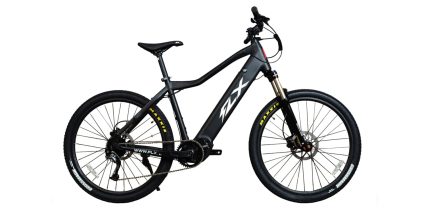
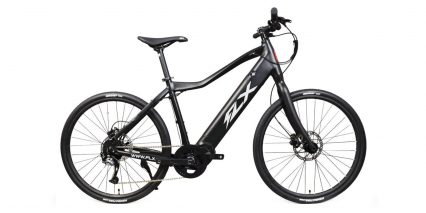
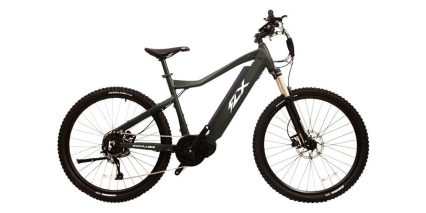
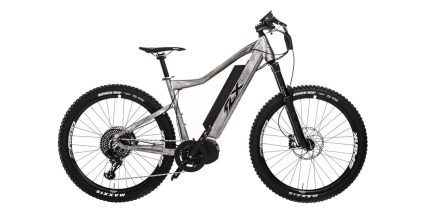

P.D
7 years agoI can’t really understand what you’re trying to convey spending so much time with the potential top speed. The bike doesn’t go 40mph; the motor CAN BE SET to keep assisting up to speeds like that but since it’s a torque sensor your cadence and torque are going to be such that it will be almost impossible to get peak watts out of the motor at that point. The bike can also be set to have the motor cut out at the legal everywhere speed of 20mph. You mention later that it’s just a 350w motor that peaks at 750 so that’s well within legal parameters. The moped song and dance is rather asinine IMHO. These bikes are speed pedalecs and with the limit removed are well suited to a top cruising speed of 28-30 mph by an average rider (I have a trail version). Set the limit on the assist to 20mph and unplug the throttle and you’re all set to ride everywhere.
I guess I would suggest the best part of the reviews on this site have been telling us what you can do on the bike and how it performs for you and leave out the editorials on what the bikes might do in theory.
ReplyCourt Rye
7 years agoGreat feedback P.D. and I agree. This was a bit of a grey area because Brent is new to working with me on the website, doing reviews, and FLX has advertised higher top speed. We went the extra clear and safe route by explaining classes, but I see how it can be boring, frustrating, or just unnecessary and we’ll try to do better in the future. Thanks again! I hope you have been enjoying your FLX and welcome your comments and feedback anytime.
ReplyPD
7 years agoI think it’s fine for Brent to find his own voice in all this but he might read your review of the Volt Enduro. Same motor and was sent to you programed under 20mph. You delt with the programing on your own and were clear on how it worked. There needs to be some level of consistency in the reviews on the site. One bike with the bafang max gets positive marks and a clear explanation of the programing capabilities and another bafang max bike (with less battery voltage even) gets described as basically only legal off road and a moped label.
PD
7 years agoThanks Court, your site continues to be a useful resource. I have a first and second generation FLX trail (5000 miles combined) that are my first eBikes. I also manage a facebook owner’s group for the bikes where owners from around the world share information about the bikes (warts and all).
I commute in Seattle on my bike and like many of us have become rather promotional of the whole technology of ebikes and the benefits they bring to various forms of bicycle use. In that vain I try and keep up with new bikes and DIY kits for when people ask me for assistance. Here’s a video I put together for a FLX contest but it really pertains to most all ebike commuting.
ReplyCourt Rye
7 years agoAwesome video Paul, I shared it on Facebook because I think you captured the opportunity offered by electric bikes. Thanks again for the compliments and your involvement here, I hope your FLX continues to work well for you and invite feedback any time :)
ReplyNico Durand
6 years agoThanks for this review. Here is my experience with the FLX Roadster, after 2 years, straight out of kickstarter.
At first I loved it, as it was my first e-bike. It is a true life changer and the best mode of transportation in many cities! It “flattens” hills, which is an incredible feeling. You get pretty quickly to 20 miles/h, which is a great cruising speed. My top speed (downhill) was ~35 mph; beyond that, it’s too dangerous anyway. It’s also nice to be able to take the battery out and recharge it elsewhere.
Sadly, the bike is extremely poorly built:
- They claim the battery can go for 30 miles or more. Mine gets weak after 15 and dies at 20 miles, in ideal conditions (I would say 15 miles max in winter).
- This is the flimsiest bike I’ve ever had. So many screws, nuts and bolts have popped at least once. My 2 fenders are broken (one is because the bike fell while standing).
- To top it up, the motor died after 14 months of use… I emailed them right before it broke. They emailed back and forth to tell me that they were about to get spare parts in a shipment. After 6 weeks, I finally got a replacement, and had to pay $75 for a known issue! Four months after changing the motor (it was a 4 hour project…), I can sense that there is something wrong again when I pedal… :(
- They sent a bike seat with the wrong “minimum depth” marking on it, so of course, the frame cracked… They want $280 to ship me a replacement frame, for THEIR mistake. They also offer to cover the welding cost, but the worst part about it is that no bike shops want to service it anymore (because of liability issues). So I’m on my own…
- They are extremely slow at handling problems. Both times (for the motor and the frame), it took ~20 emails (mostly me asking “can you please reply?”) and 6 weeks!
- More minor details; I don’t find the “user interface” of the control panel very intuitive or efficient. For example, you need to set motor speed every time! The gears were never really aligned, despite a professional tuneup after 200 miles. It derails quite easily over bumps.
ReplyCourt
6 years agoThank you for the extensive feedback Nico. I think most value priced ebikes are using parts that won’t hold up over the long term. The motors, batteries, frame parts are good enough for urban use but might not cut it on off-road. It’s important to see comments like yours here, to help people who might have a different hope or expectation. Since I only cover brand new ebikes and have limited time, I rely on real owners to chime in with comments and forum posts. Again, you’ve helped and I appreciate it :)
ReplyNico
6 years agoYou’re very welcome Court.
Just to add to my review: my bike is 2 y.o., with 1600 miles (plus a few while the motor was kaputt… I still used it without the battery) of exclusively road use.